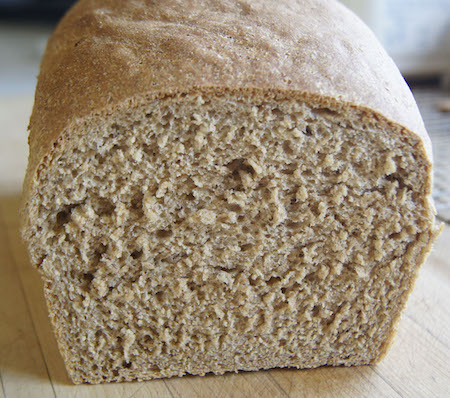Cookbook #248: Pillsbury’s Bake Off Dessert Cook Book, The Pillsbury Company, USA, 1968, 2nd printing, 1971.
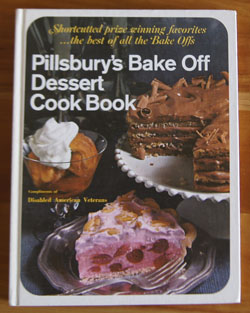 Pillsbury’s Bake Off Dessert Cook Book is the last and grandest of my Pillsbury Bake-Off cookbooks. All of the others are small booklets but this one is hard-cover bound and 144 pages long. It includes recipes from “Eighteen years of Pillsbury Bake Offs”, updated with “short-cuts and the use of convenience food ingredients where possible”. (I discuss Pillsbury Bake-off cookbooks/recipe magazines more thoroughly in my blog post covering the 1964 Bake-Off Cookbook.)
Pillsbury’s Bake Off Dessert Cook Book is the last and grandest of my Pillsbury Bake-Off cookbooks. All of the others are small booklets but this one is hard-cover bound and 144 pages long. It includes recipes from “Eighteen years of Pillsbury Bake Offs”, updated with “short-cuts and the use of convenience food ingredients where possible”. (I discuss Pillsbury Bake-off cookbooks/recipe magazines more thoroughly in my blog post covering the 1964 Bake-Off Cookbook.)
This is one of Mother’s cookbooks, but she has no written notes in it. Two places in the book are marked with small scraps of paper (pages 123 and 127). I’m kind of surprised at this, because she was such a Bake-off Cookbook fan. And I was hoping for a few more memorable notes from her, as I get to the last of her cookbooks in this 250 Cookbooks blog.
The first chapter is “Desserts Warm From The Oven”. Hmmm, sounds right up my alley. Peach Melba Special looks good: peaches and red raspberries with ginger topped with batter and baked. How about Applecots, apple halves stuffed with apricots and wrapped in dough and baked. Or Caramel Apple Pudding, a “pudding cake” with 1 1/2 cups fresh apples and 1/2 cup chopped almonds. What’s a pudding cake? It’s a cake made by placing a wet or dry batter in a pan, adding a boiling water sauce on top, and baking in the oven. Pudding cakes are one of my favorite desserts! Why? They are simple, often contain fruit, and are served hot with ice cream. Homey goodness.
I found two more recipes I like in the Desserts Warm From The Oven chapter. Apple Peanut Spoon Dessert calls for 4 cups of apples and has peanut butter in the topping. Baked Apple Cuplets are peeled whole apples topped with a cake-like batter and baked in custard cups.
The next chapter is “Family Dessert Favorites”. I like the Quick Banana Buns, an unusual banana dessert made from dough laced with mashed bananas cooked as buns, then filled with sliced bananas and whipped cream.
The final three chapters are “Pies, Pies, And More Pies”, “Make-Ahead Pies and Desserts”, and “Conversation Piece Pies And Desserts”. Hey – no chapters for pies and cookies! There are a few cake-type recipes in the other “Dessert” chapters, but that is all.
Mother was great at making pies, and I am surprised she marked none of the pie recipes. I think almost all of the pie recipes Pillsbury’s Bake Off Dessert Cook Book sound great. I just don’t make pies often because they are so full of calories. (And if I want to make a pie, I use one of my mother’s recipes.)
Many, but not all, of the recipes in Pillsbury’s Bake Off Dessert Cook Book call for “short-cut” ingredients, such as refrigerated rolls, canned pie filling, cake mixes, and canned fruits. For instance, one recipe calls for “peanut butter refrigerated quick caramel rolls with nuts”. I doubt these could be found in markets today – fifty years since the publication of this book. (Besides, I prefer to cook from scratch.)
It’s not until page 136 that I find the recipe I want to make for this blog: “Cherry Honeys”.

Why do I like this? Because it has fruit and honey in it, and I can cut calories by using Cool Whip® instead of whipping cream. Sour cream and coconut are folded into the whipped cream – an unusual and tasty-sounding twist. The serving sizes are small and designated so we can stay on our “diet” and still have these. Of course, I’ll make my own pie crust instead of purchasing pie crust mix. Plus, they should look really cute and pretty!
And I have to admit, I get to buy something new to make these: tart pans. I have quiche pans of many sizes, custard cups, many sizes of ramekins, small and large donut pans, bun pans, bundt pans, small and large spring form pans, cake pans, popover pans, lava cake pans, muffin pans – but NO mini tart pans!
- crust for single-crust pie
- 1 can (16 ounces) pitted dark sweet cherries
- 1 1/2 tablespoons cornstarch
- 1/4 cup honey
- 1 tablespoon grated orange peel
- 1 tablespoon lemon juice
- 1/2 cup whipping cream (or use a light whipped cream alternative)
- 1/2 cup flaked coconut
- 1/3 cup sour cream
- 2 tablespoons sugar
Divide the dough into 6 pieces. Roll each into a circle to fit 4-inch tart pans. Fit them into the pans, forming a standing rim, and flute the edges.
Bake at 450˚ for 8-10 minutes, or until golden brown. Cool.
Drain the cherries and save the juice. Add the cornstarch to the juice and mix well, then add the honey and orange peel. Cook over medium heat, stirring until the mixture is thick and clear. Remove from heat and add the cherries and lemon juice. Cool.
Beat the whipping cream until thick, then fold in the coconut, sour cream, and sugar.
Just before serving, spoon the cherry filling into the tart shells and garnish with the whipped cream mixture.
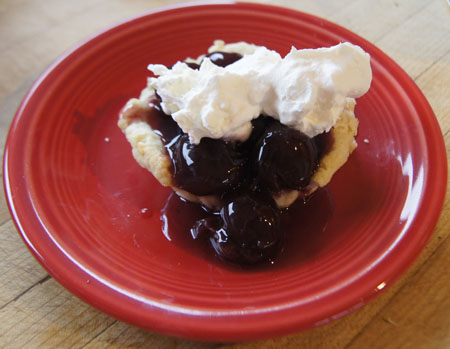 These were excellent. Except for the crust, they aren’t terribly rich. The next night, I made another batch of the cherry mixture and served them with ice cream. Yum!
These were excellent. Except for the crust, they aren’t terribly rich. The next night, I made another batch of the cherry mixture and served them with ice cream. Yum!

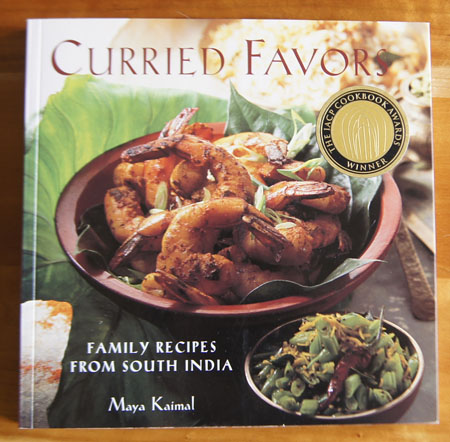
 I plan to cut the recipe in half and leave out the turmeric, and use less cayenne. I have everything for this recipe in my pantry and or my freezer except the coconut milk and a fresh hot chili (a quick trip to a store solved those issues). I will use bay leaves instead of curry (or kari) leaves. (I know where to find curry leaves in downtown Boulder, but don’t have any in my pantry right now.} I also increased the amount of coconut milk. Below is my adaptation of the above recipe.
I plan to cut the recipe in half and leave out the turmeric, and use less cayenne. I have everything for this recipe in my pantry and or my freezer except the coconut milk and a fresh hot chili (a quick trip to a store solved those issues). I will use bay leaves instead of curry (or kari) leaves. (I know where to find curry leaves in downtown Boulder, but don’t have any in my pantry right now.} I also increased the amount of coconut milk. Below is my adaptation of the above recipe. When the chicken has rested in its rub (refrigerated) for at least an hour, set a frying pan on medium high heat and add the oil, mustard seeds, and bay leaf. Cover. Heat until the mustard seeds pop. Uncover and add the onion and cook and stir until the onion is browning nicely. Add the garlic, ginger, green chili, and ground fennel seeds and cook and stir for 2 minutes.
When the chicken has rested in its rub (refrigerated) for at least an hour, set a frying pan on medium high heat and add the oil, mustard seeds, and bay leaf. Cover. Heat until the mustard seeds pop. Uncover and add the onion and cook and stir until the onion is browning nicely. Add the garlic, ginger, green chili, and ground fennel seeds and cook and stir for 2 minutes.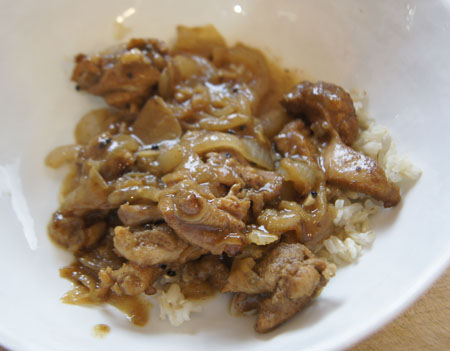 I love this curry. I like the whole cooking process, too. The aromas as it cooks! The flavors as I eat it! But hubby? Well, he ate it all. But when asked, he said something like “yeah, it was dinner”. Guess I didn’t slip this curry by him. Maybe it isn’t just the yellow color that he does not like about curries. His loss.
I love this curry. I like the whole cooking process, too. The aromas as it cooks! The flavors as I eat it! But hubby? Well, he ate it all. But when asked, he said something like “yeah, it was dinner”. Guess I didn’t slip this curry by him. Maybe it isn’t just the yellow color that he does not like about curries. His loss. I also made chappathi from another recipe in this book. These are small flatbreads cooked on a stove-top, similar to tortillas, but made from durum wheat flour (“atta” flour) and water (and a little salt) – that’s all. I had some durum wheat flour in my pantry because of forays into pasta cooking. To make the chappathi, you mix and knead together flour and water, cut into equal-sized pieces, roll each to a circle, and cook briefly on a hot griddle. It’s kind of like making tortillas or crepes or pita breads. Mine came out pretty good. Here’s the rolled out dough:
I also made chappathi from another recipe in this book. These are small flatbreads cooked on a stove-top, similar to tortillas, but made from durum wheat flour (“atta” flour) and water (and a little salt) – that’s all. I had some durum wheat flour in my pantry because of forays into pasta cooking. To make the chappathi, you mix and knead together flour and water, cut into equal-sized pieces, roll each to a circle, and cook briefly on a hot griddle. It’s kind of like making tortillas or crepes or pita breads. Mine came out pretty good. Here’s the rolled out dough: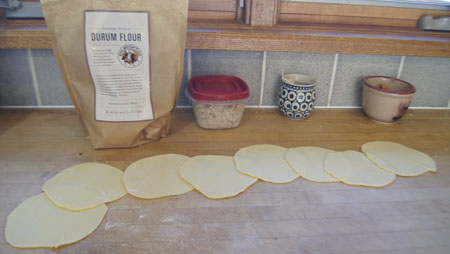
 Taste? Not a lot, but I thought they were interesting. They sure are cute.
Taste? Not a lot, but I thought they were interesting. They sure are cute.
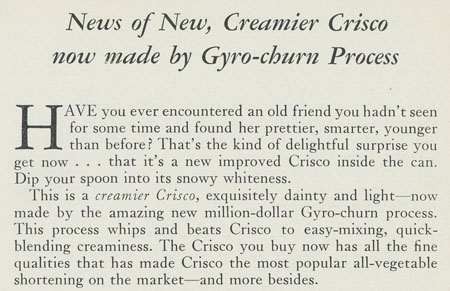 Next come four chapters that discuss the proper way to manage a kitchen and serve food. Transport yourself back 81 years, to the kitchen of my grandmother, to the culture of America in the 1930s. Here is the beginning of the first chapter:
Next come four chapters that discuss the proper way to manage a kitchen and serve food. Transport yourself back 81 years, to the kitchen of my grandmother, to the culture of America in the 1930s. Here is the beginning of the first chapter:
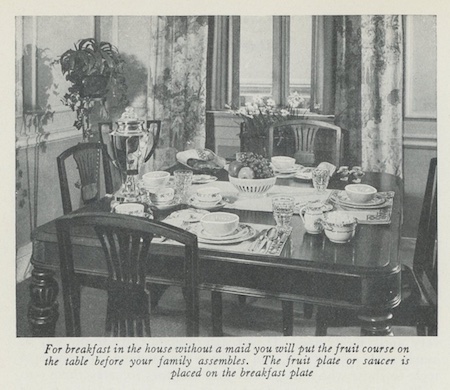 This chapter goes on for 24 pages describing the proper way to serve food in the servantless home. And if you have a maid? That chapter has 9 pages, beginning with these paragraphs:
This chapter goes on for 24 pages describing the proper way to serve food in the servantless home. And if you have a maid? That chapter has 9 pages, beginning with these paragraphs: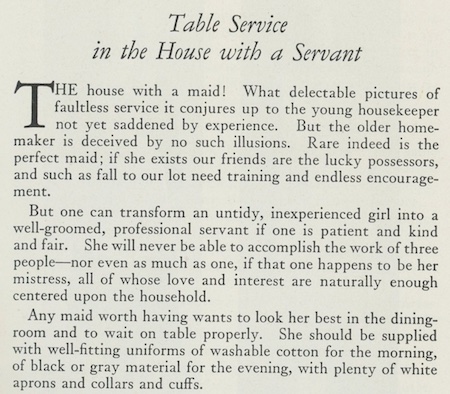
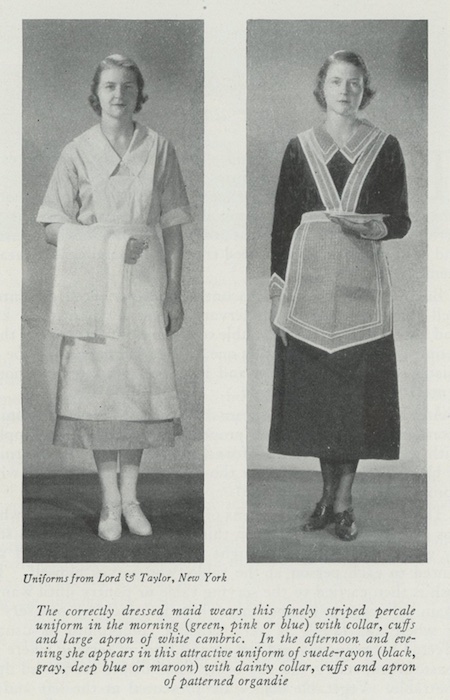
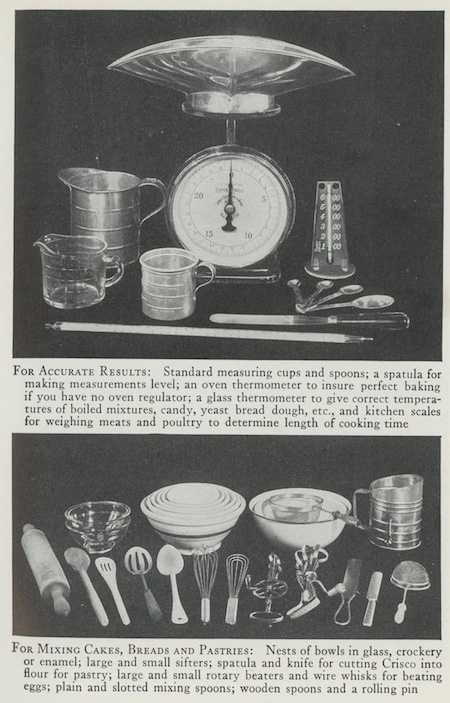 “How to Plan Your Meals” is a short chapter on what foods to include in your diet for sufficient protein, energy (fats, starches, sugars), body regulation (roughage and minerals), vitamins, and water.
“How to Plan Your Meals” is a short chapter on what foods to include in your diet for sufficient protein, energy (fats, starches, sugars), body regulation (roughage and minerals), vitamins, and water.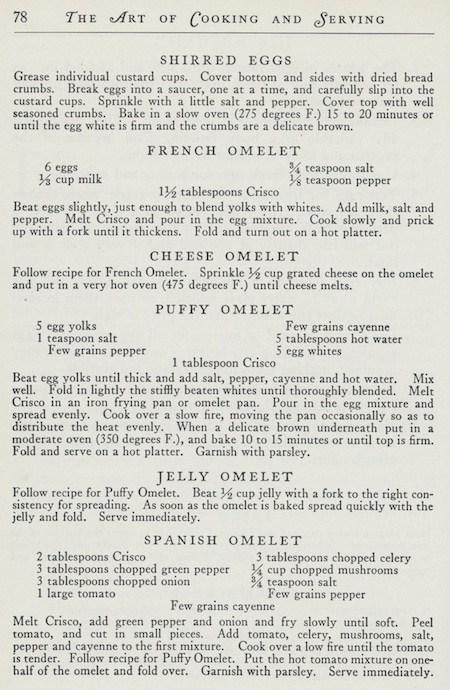 Here is a photo of the omelet:
Here is a photo of the omelet: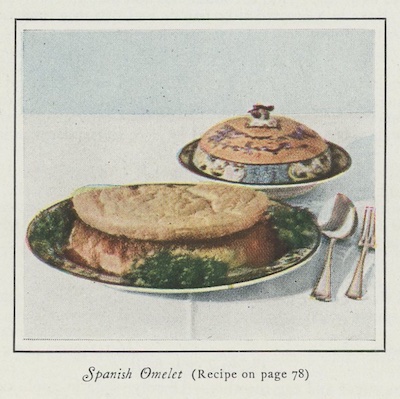 These recipes are for main dishes.
These recipes are for main dishes.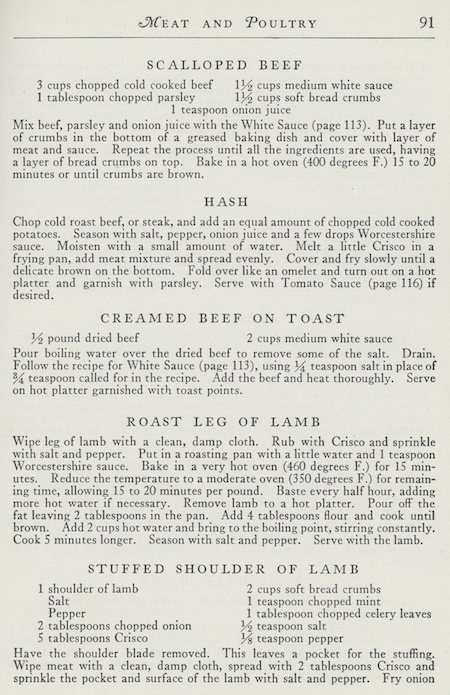 These are classic cookie recipes, especially the Hermits (a dark spice cookie filled with fruits and nuts) and the Oatmeal Cookies.
These are classic cookie recipes, especially the Hermits (a dark spice cookie filled with fruits and nuts) and the Oatmeal Cookies.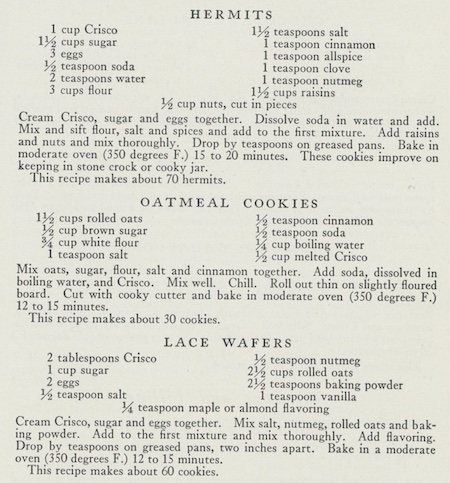

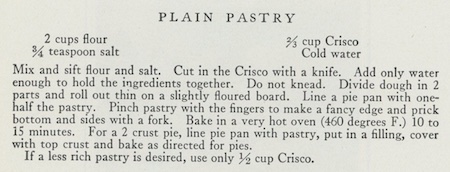 And what type of pie to make with the plain pastry crust? Why not old-fashioned Mincemeat Pie, or Mock Cherry Pie:
And what type of pie to make with the plain pastry crust? Why not old-fashioned Mincemeat Pie, or Mock Cherry Pie: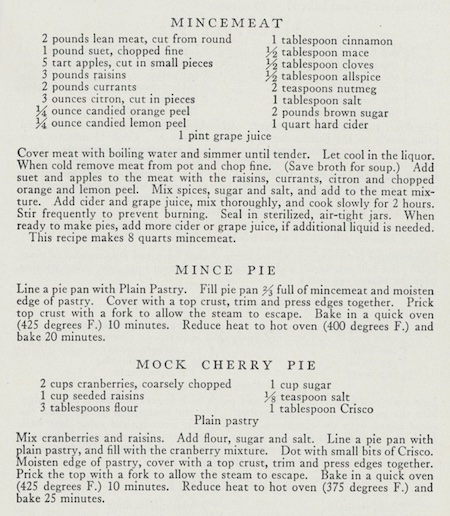
 I think this is an amazing recipe. For one, it calls for 1 1/2 cups of sweet potatoes – and that’s a lot! And it calls for only 2 tablespoons of sugar and 3 of shortening. I think the 2 tablespoons baking powder might be a bit much, but I stayed with that original amount. I am going to use my immersion blender to mash the sweet potatoes with the milk, and my food processor for the flour and shortening. Otherwise, I am staying with the original recipe.
I think this is an amazing recipe. For one, it calls for 1 1/2 cups of sweet potatoes – and that’s a lot! And it calls for only 2 tablespoons of sugar and 3 of shortening. I think the 2 tablespoons baking powder might be a bit much, but I stayed with that original amount. I am going to use my immersion blender to mash the sweet potatoes with the milk, and my food processor for the flour and shortening. Otherwise, I am staying with the original recipe.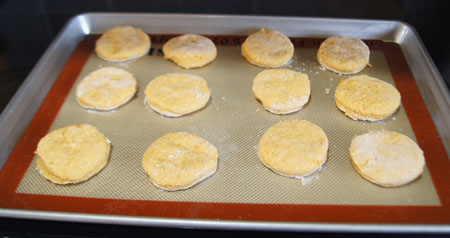 Here they are, baked:
Here they are, baked: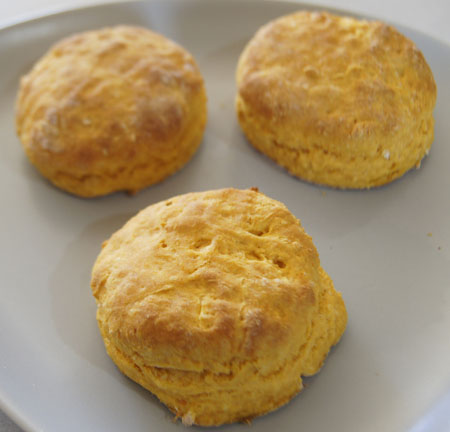
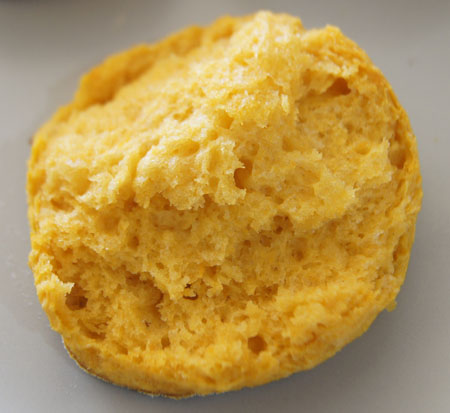 My daughter and I really loved these. Hubby avoided them – he isn’t a sweet potato fan. His loss. And more for us! This was definitely a successful recipe.
My daughter and I really loved these. Hubby avoided them – he isn’t a sweet potato fan. His loss. And more for us! This was definitely a successful recipe. I’ve saved this book for one of my last entries for this 250 Cookbooks blog because it is special to me. It was my mother’s, given to her by my brother and sister in 1986. Her notes are in it, some pages are stained with food, and many pages are falling out of the binding. I just love it!
I’ve saved this book for one of my last entries for this 250 Cookbooks blog because it is special to me. It was my mother’s, given to her by my brother and sister in 1986. Her notes are in it, some pages are stained with food, and many pages are falling out of the binding. I just love it!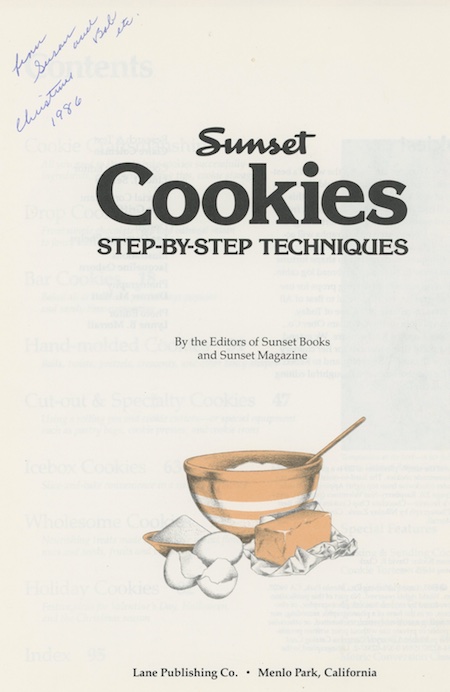

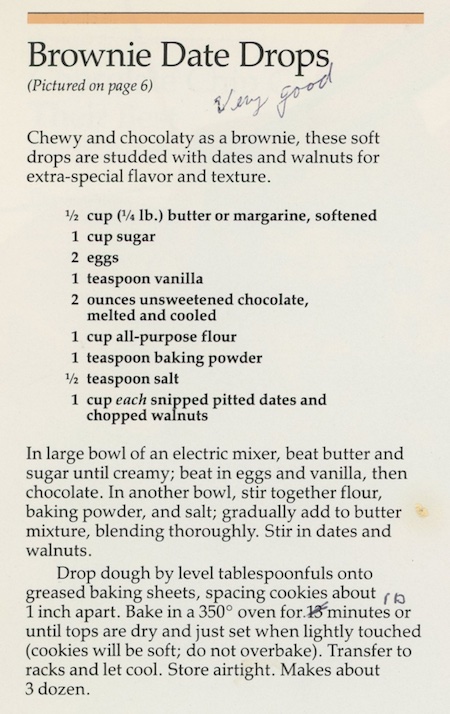


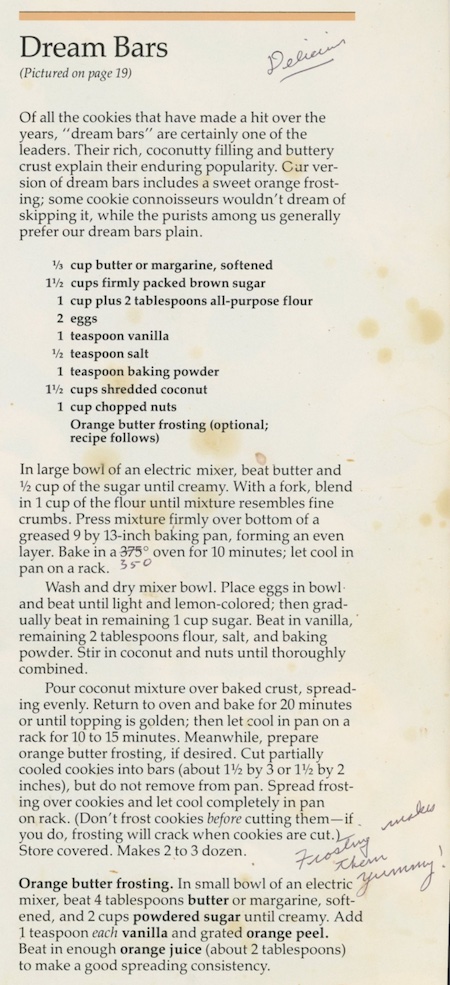
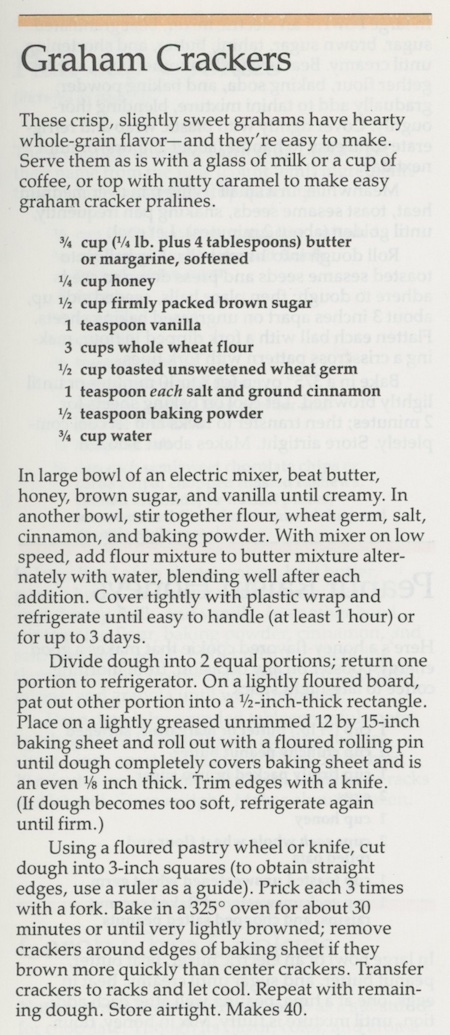
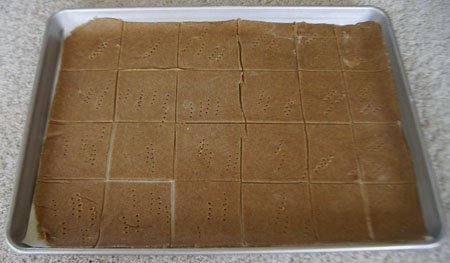 And here is a cooked one on a plate:
And here is a cooked one on a plate: Oh yes, there are not just 3 fork pricks in this cracker! Practicing “one-two-three” with a 4 year old sometimes doesn’t work. But who cares? These were actually delicious, although not all the adults liked them. I thought they were even better the next day, but I doubt the rest of the batch lasted that long – my grandson made sure that he put all his crackers in a bag to take home. I saved this one cracker in the photo above to be sure I had one to take of picture of the next day. Then I ate it!
Oh yes, there are not just 3 fork pricks in this cracker! Practicing “one-two-three” with a 4 year old sometimes doesn’t work. But who cares? These were actually delicious, although not all the adults liked them. I thought they were even better the next day, but I doubt the rest of the batch lasted that long – my grandson made sure that he put all his crackers in a bag to take home. I saved this one cracker in the photo above to be sure I had one to take of picture of the next day. Then I ate it!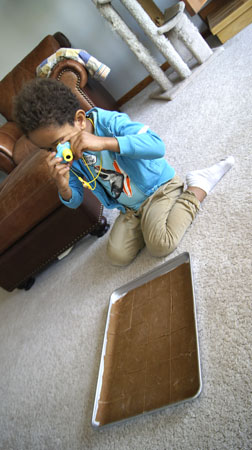
 “I smile warmly at Julia Child’s complete love of cooking”. These words were mine when I explored
“I smile warmly at Julia Child’s complete love of cooking”. These words were mine when I explored  From the above excerpt, we learn that Mastering the Art of French Cooking was written as a textbook, a complete guide, and was written as a collaboration. I used to be a bit intimidated by that first tome. (Now I totally enjoy it!) From Julia Child’s Kitchen is less serious and more fun. Sure, it includes all the important methods of preparing soups, poultry, meats, egg dishes, quiches, homemade sausages, fresh vegetables, French breads, pastries and desserts. But it focuses on the American home cook, with recipes that can be made in a reasonable amount of time and with any level of cooking skill. From Julia Child’s Kitchen also has a chapter on “earthy alternatives”, such as lentils, beans and rice. I find most of the recipes a bit less calorie-laden than in her previous book. And, there are cartoons throughout.
From the above excerpt, we learn that Mastering the Art of French Cooking was written as a textbook, a complete guide, and was written as a collaboration. I used to be a bit intimidated by that first tome. (Now I totally enjoy it!) From Julia Child’s Kitchen is less serious and more fun. Sure, it includes all the important methods of preparing soups, poultry, meats, egg dishes, quiches, homemade sausages, fresh vegetables, French breads, pastries and desserts. But it focuses on the American home cook, with recipes that can be made in a reasonable amount of time and with any level of cooking skill. From Julia Child’s Kitchen also has a chapter on “earthy alternatives”, such as lentils, beans and rice. I find most of the recipes a bit less calorie-laden than in her previous book. And, there are cartoons throughout.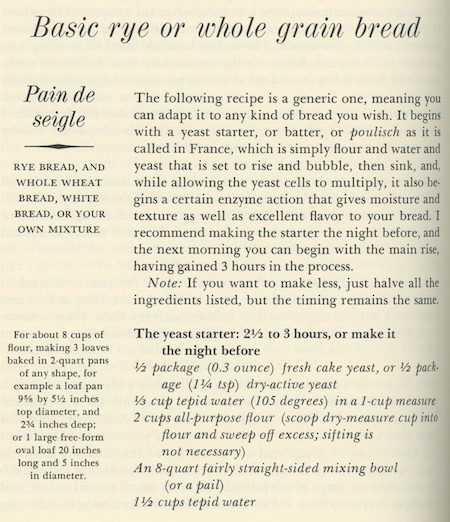
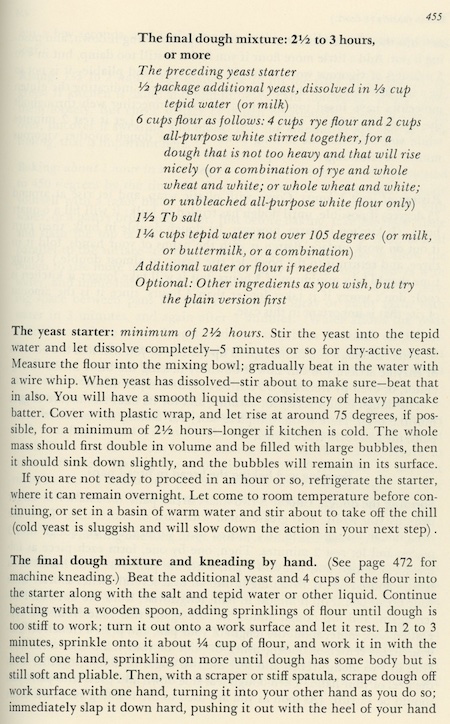
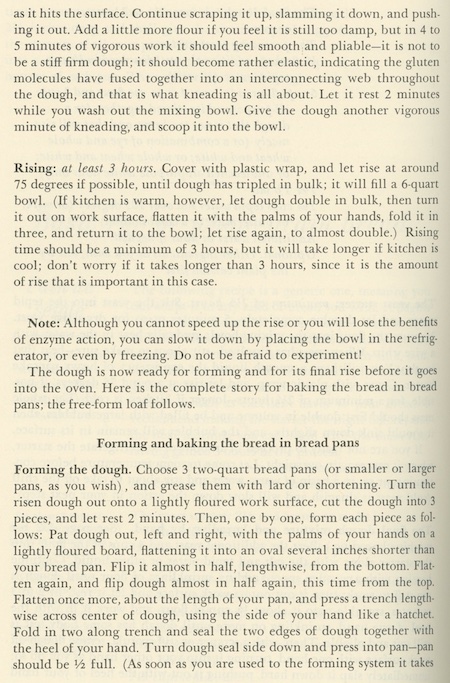
 And in the very back of From Julia Child’s Kitchen I find this – what I call very funny – passage in one of the appendices:
And in the very back of From Julia Child’s Kitchen I find this – what I call very funny – passage in one of the appendices: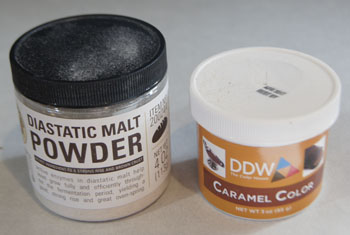
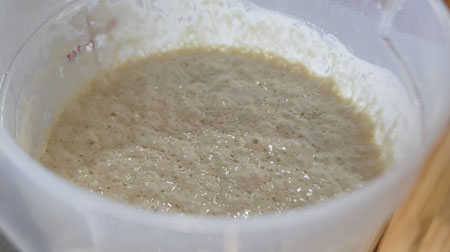 It is just lovely and bubbly and has a wonderful yeasty sour smell.
It is just lovely and bubbly and has a wonderful yeasty sour smell.
